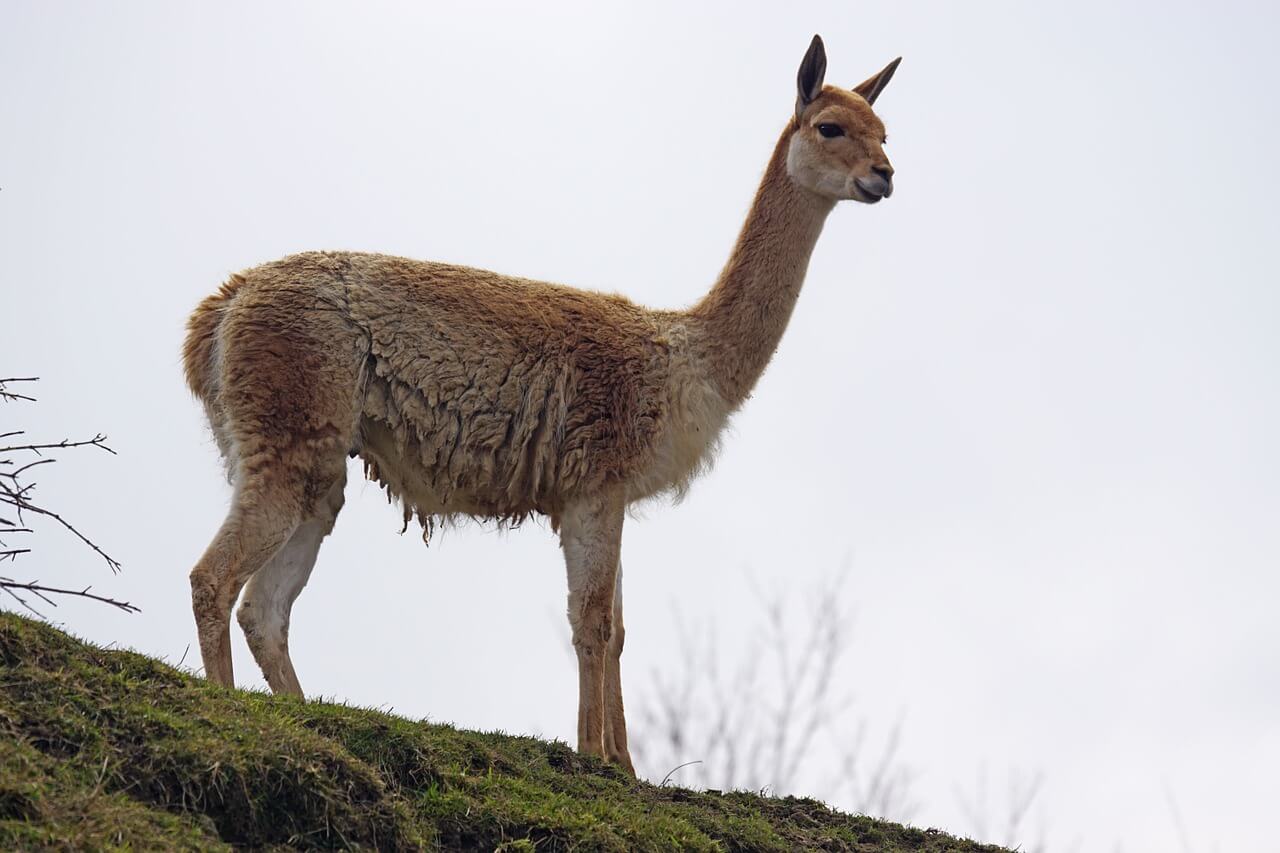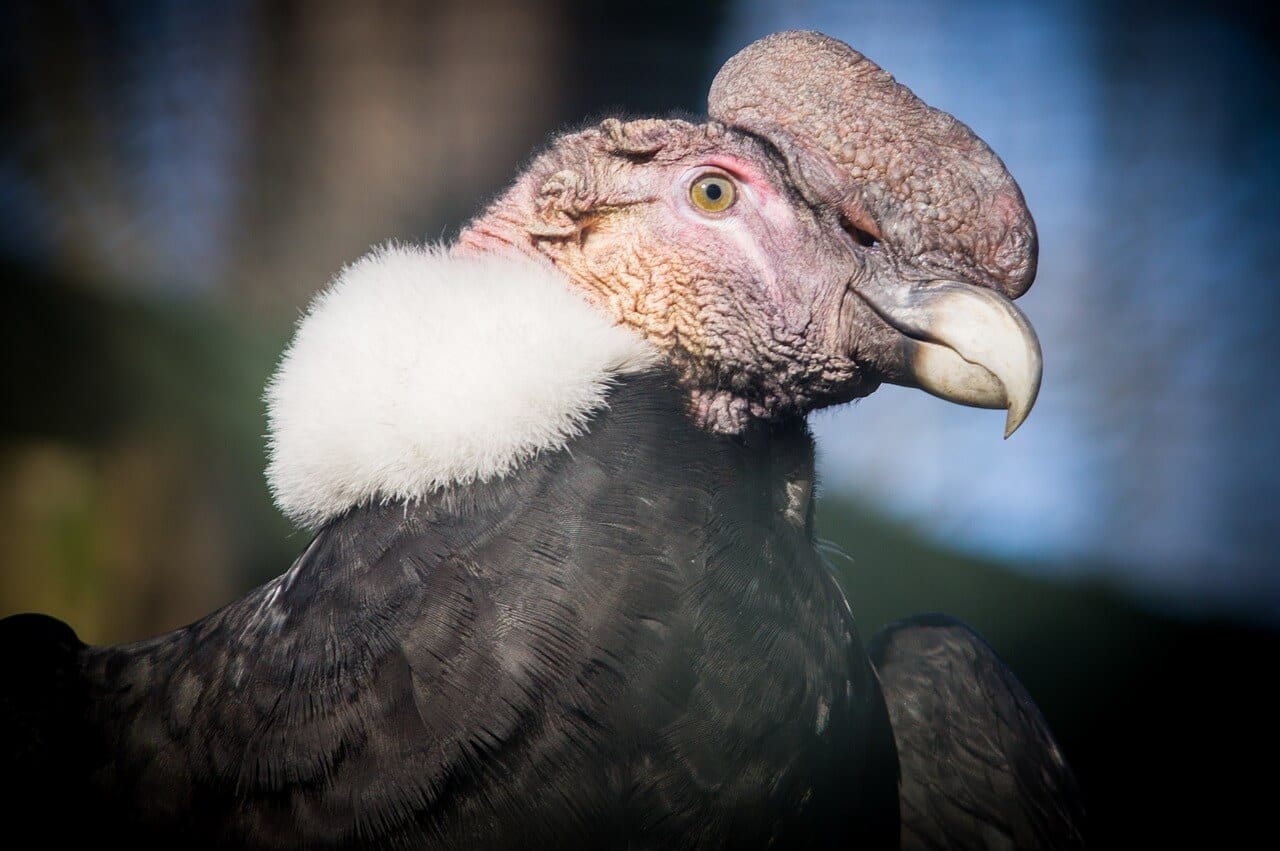Chimborazo National Park – which is commonly referred to as Chimborazo Wildlife Reserve – is a 145,000-acre protected area, located in the Ecuadorian Andes. Named after one of the tallest mountains in the Western Hemisphere, the park hosts thousands of visitors each year. Many visitors come to climb the mountain. Others, however, come to see the beautiful wildlife living within the reserve’s borders.
We’ll discuss some of the park’s most notable wildlife species below. This will help you better understand their biology, ecology and way of life. We’ll even provide some tips for maximizing the number of animals you see.
Mammals of the Mountains
Chimborazo National Park provides visitors with the chance to see a variety of mammal species.
Several different mammals live in Chimborazo National Park. However, few are as interesting and easy to see as the three large ungulate species that call the park home. This includes the vicunas, llama and alpaca.

The vicunas is the only truly wild member of the trio. Alpacas are domesticated versions of vicunas, and llamas are domesticated descendants of the guanaco. Nevertheless, you may see all three roaming free in and around Chimborazo National Park.
These animals are all largely desensitized to humans, so you can often get pretty close to the animals. Just be sure you don’t get too close. Despite their placid demeanor, these are still large animals deserving of respect.
Other mammals that call Chimborazo National Park home include long-tailed weasels, white-tailed deer, Andean foxes and Brazilian cottontails. Several common rodent species also dwell throughout the park’s varied habitats. However, they’re harder to spot than the park’s large animals.
Breath-Taking Bird Life
Bird-watching opportunities abound at all elevations of Chimborazo National Park.
Because Chimborazo National Park is covered in a variety of different habitats found at different elevations, the park’s bird diversity is quite impressive. Within a few short hours, you may have the chance to see dozens of different beautiful and interesting species, going about their daily lives.

One of the most noteworthy species that lives in the park is the Andean lapwing. This bird bears attractive red markings and feet, which make it easy to identify. The the white-edged oriole, which is clad in a handsome combination of black and yellow feathers, also lives in the park.
Several woodpeckers live in the park’s forested areas, including the black-cheeked and Guayaquil woodpeckers, among others. Waterfowl, such as the Paramo ducks and Paramo gulls are often abundant in the park’s seasonal lakes.
But the park’s birds of prey are probably the most exciting birds visitors get the chance to see. The park is home to a diverse collection of predatory birds, including the black-chested buzzard eagle and the carunculated caracara. But the park’s most famous bird species is clearly the rare Andean condor.
Amphibians in Peril
Several threatened frog species live within Chimborazo National Park’s borders.
Most parks in Central and South America host a diverse collection of amphibians. However, because Chimborazo is a high-altitude park, it doesn’t have as many as most others. Nevertheless, there are several beautiful and ecologically important frogs living in the park that you may have the chance to see.

For example, the Intac rubber frog is very common in the park. Visitors also see the Zurucuchu rubber frog frequently. The Andean marsupial tree frog – a species in which the males carry around their tadpoles in specialized pouches – is also relatively common.
Unfortunately, many of the park’s frogs are either threatened or already classified as endangered. Some of the frog species experiencing population declines include the Jambato toad (which as though extinct until it was rediscovered in 2016) and the Quito rocket frog.
Wildlife Viewing Tips: Make the Most of Your Chimborazo Adventure
Employ the following tips and techniques to see as many wildlife species as possible.
You don’t want to go to the trouble of traveling all the way to Ecuador unless you are going to make the most of your trip. So, try to employ the tips provided below, as they’ll help you spot as many wild animals and take as many photos as possible.
- Take advantage of the guided tours available. There are a few different tour guide services that provided guided tours of the park. Because the guides are very familiar with the species living in the region, they’ll provide you with a much better chance of seeing a variety of animals than if you explore the park on your own.
- Bring binoculars. If you were only going to focus on one group of animals while visiting Chimborazo, it should unquestionably be the birds. But you won’t be able to get very close to many of the birds living in the area, so be sure to bring a good pair of binoculars. This way, you’ll be able to spot more species and appreciate the fine details of their plumage.
- Schedule your visit for the summer. While the lower elevations of Chimborazo feature warm and comfortable temperatures all year long, it can get cold as you ascend during the winter. This will not only force you to wear more clothing, but it’ll also reduce your chances of seeing some of the park’s most notable species.
- Prepare for the high humidity of the park. The humidity is always high around Chimborazo, and many visitors are surprised by just how quickly their clothing becomes soaked. So, be sure to bring plenty of fresh clothes, so you can change as necessary. This will help keep your skin dry and prevent blisters from forming.

Tell Us About Your Experiences!
Chimborazo National Park is certainly a fantastic destination for wildlife lovers visiting Ecuador. It is not only a unique area, but it is also a well-run wildlife reserve that caters to the needs of visitors. Simply put, you’ll want to ensure that you make time to visit the park anytime you find yourself in South America.
Have you ever visited Chimborazo National Park? We’d love to hear about your experiences! Tell us what you thought of the park and let us know which animal species you had the chance to see in the comments below.














![Red Angus Closeup of a beautiful Red Angus cowPhoto by: U.S. Department of Agriculture [pubic domain]https://creativecommons.org/licenses/by/2.0/](https://animals.net/wp-content/uploads/2020/03/Red-Angus-4-100x75.jpg)

